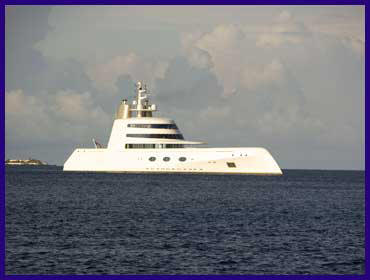
 |
Downwind to Bonaire, goose-winged, rolly but fast.
First thing we spot is the tower of the salt pans - that being Bonaire's only
export. Next is the wind farm. How did mariners find these islands
before they covered them with windmills? We motor up the coast in the lee
of the island towards Kralendijk, the capital. Our first impressions are
positive, the waterfront is full of Dutch style buildings all painted in pastel
colours. It looked clean. There's no anchoring allowed in Bonaire. Even if it was, there's virtually nowhere to anchor. The underwater ledge that extends out from land is narrow and with only a thin covering of sand. More importantly, aside from salt the main revenue generator of Bonaire is tourism, and tourism of an underwater kind. Virtually the whole island is surrounded by stunning coral reef, dropping off the ledge into the deep and the associated marine life on the reef is prolific. Diving is why people come to Bonaire. The whole coast line and it's reef is a protected marine park, and to protect the reef, the authorities some years ago dropped 40 or so substantial mooring buoys for visiting yachts and banned anchoring. |
| The buoys are in pairs (port & starboard) which makes picking them up a tad tricky. No problem as it turned out. Bouncing across the waves in his little Zodiac comes Yves from Imagine to pick up the mooring lines and hand them to Lindy, easy peasy. Only I misjudge it, and slowly fall away to leeward leaving Yves standing in his dinghy holding a mooring buoy in each hand and grinning. I come in faster next time and duly ram him (Ha. That'll teach him to grin at me!) No problem, he's still grinning and miraculously still holding both buoys! In a few more minutes we're tied up and receiving a potted island guide from Yves in very broken Spanish (trust me his English is worse). He has been here for several days and seems to have discovered where everything is, but has so far failed in a very Gallic way to trouble either immigration or customs. "No problem, we'll all go together tomorrow." And then he's off. He's spotted Kanaloa arriving and he's off to help them with their lines as well. | |
| And tomorrow we do go and complete the
formalities. All very easy. Relaxed smiling people who just want to
make everything easy for us. Yves is ticked off at each office for not
having cleared in earlier. He grins, rolls his eyes, shrugs his shoulders,
looks bemused, confused, speaks only in French and finally the officials grin as
well and stamp his papers. We spend the next days just relaxing, sitting in waterfront bars or restaurants. So different from the last 9 months in Venezuela. Then the 6 of us hire a car for a day to tour the island. We quickly discover that a day is all it takes. We do the salt pans, slave huts and flamingos. That's the south of the island covered. Then we head for Rincon, Bonaire's second city (actually village). Rincon has a restaurant which is in the guide, but it's closed. We find another (actually the other) bar/restaurant. We ask what they have to eat. The lady behind the bar eyes us uncomfortably. Turns out it's a quantity issue. No matter which way you cut it she can't come up with enough dishes to serve 6 people. Tourists just don't come to Rincon. In reality, tourists in Bonaire don't really move far away from the dive sites. |
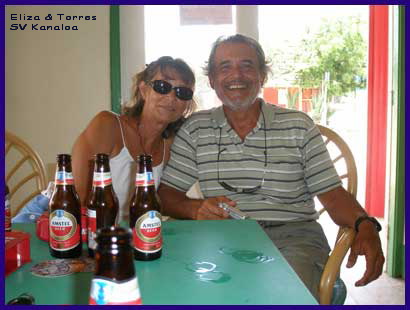 |
| So we have a few beers and carry on north (we're nearly at the end of the island now). See some more flamingos and then we arrive at the entrance to the national park. We debate whether to go in. It doesn't really look like there's much to see and we're all starving. In half an hour we can be back in Kralendijk and sitting in a restaurant. Then somebody spots on the sign that there's a restaurant in the park. We confirm that it's open and pay our entry fees (the tickets are valid for a year - hurrah). The park does not fail to meet our expectations - cactus scrub and a couple of semi-wild donkeys. Not even a flamingo! However, the restaurant is open. It's also predictably overpriced and awful, so we eat a mediocre meal and then do what cruisers with a hire car always do - go shopping and fill the car with all the heavy stuff we would otherwise have to carry by hand back to the boat. | ||
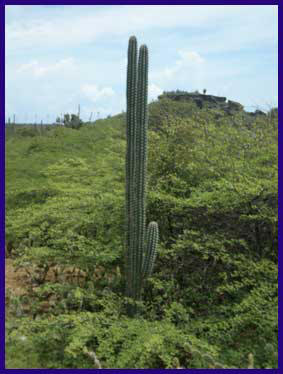 |
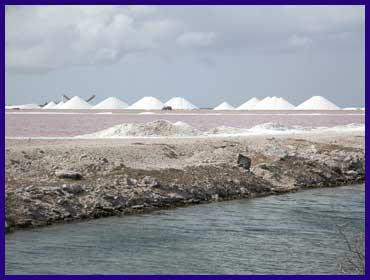 |
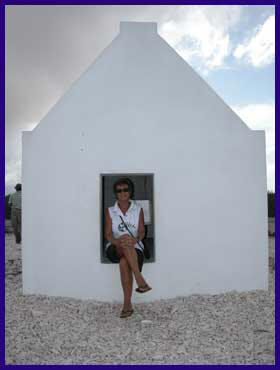 |
| As we said above the reason people come to Bonaire (apart of course for the flamingos) is the diving. Our mooring buoy is not much more than 100 metres from the Yellow Submarine dive school. So we sign up to do our PADI open water certification, which will qualify us to dive, hire equipment, fill tanks, etc anywhere in the world. A week of buggering around with buoyancy, taking equipment off and putting it back on under water, and (Lindy's particular favourite) taking our mask off whilst sitting on the seabed, letting them fill with water and clearing them again. Then we were qualified. And not being people to do things by halves, and scuba gear being completely incompatible with any other gear we had on the boat, we next took the opportunity to spend hundreds of pounds scuba shopping - and then converting our forward head into "Scuba Room"! Prospective guests will now have to deal with the fact that it's not possible to use the toilet without donning a wet suit! |
|
Our time in Bonaire coincided with the World Cup 2010 which seemed to totally engulf the island. The islanders didn't seem to be particularly chauvinistic in their support. The white/Dutch inhabitants predominantly fell in behind Holland of course and covered everything in orange. The majority, black population were much more varied in their allegiance. Brasil probably was most supported, whether because the local language, Papiamentu - a mongrel mixture, but with Portuguese probably being the major constituent - gave them a natural affinity, or whether because Brasil were favourites to win, who knows. Ultimately, of course, all the others fell by the wayside and it was Holland and Spain in the final, by which time the island had more or less 100% fallen in behind the Netherlands. We're not big football fans so hadn't been making the quasi compulsory trips to bars with large screen TVs. However, our next door neighbours, Adrian and Jackie on Ocean's Dream convinced us to join them at the Mona Lisa bar to watch the final. "Free food and free drinks every time that Holland score!" Well in the event Holland didn't score so there were no free drinks, but we were liberally supplied with dodgy Dutch Frikandel sausages and deep fried fish with heads still attached. Personally I prefer it when my lunch doesn't look me in the eye!
Next morning we woke to find that Ocean's Dream was nowhere to be seen. Our first thought was that Adrian and Jackie had taken the Dutch defeat much more seriously than we'd imagined, but then we noticed that their mooring wasn't there either - that's a bit like taking the ball home with you isn't it? It transpired that they'd (luckily) been woken by a rain shower in the middle of the night and getting up to close the hatches had found themselves in mid- channel, mooring buoys still attached, drifting towards Klein Bonaire. A bit more investigation uncovered the fact that whoever had installed the buoy had seized the shackle onto the seascrew with copper wire. Electrolysis had done the rest, all the thread on the shackle pin had been eaten away and it had just fallen out. Unceremoniously detached from their mooring they decided to leave for Curaçao the following morning. |
|
A few days later we were also on our way west. Bonaire was clean, safe, pretty with great diving, but not a place to get anything done and we still had problems with that generator! It was also becoming increasing difficult keeping up with our new neighbours!
|
||
|
|
||
